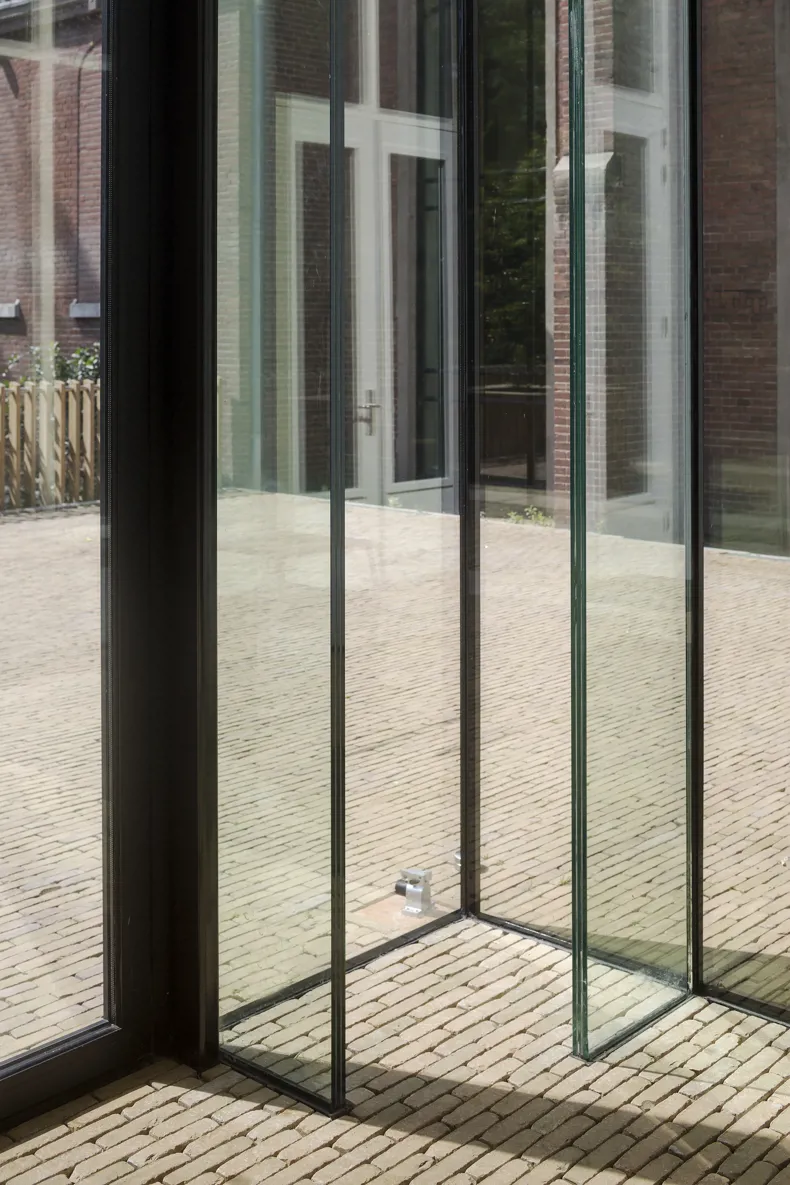CLIENT
Hotel Arena
DESIGN
Landschapsarchitectuurbureau Buro Sant en Co
Interieurarchitectenbureau TANK
Team V Architectuur
CLAY PAVERS
Ancienne Belgique Bronze Yellow
PROCESSING
Outside as paving in stabilised sand bed.
Inside sawn and in cement screed u.h. with underfloor heating.
Photos: © Teo Krijgsman - Luuk Kramer
Bronze Yellow Ancienne Belgique forms link between transparent pavilions and terrace
Make-over Hotel Arena in Amsterdam creates tasteful park hotel/
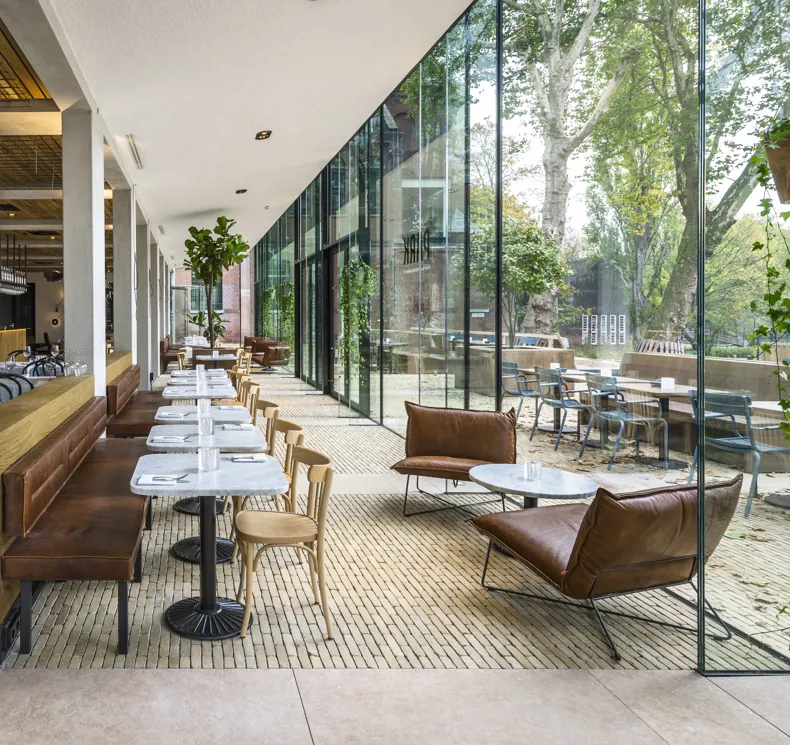
The 4-star Hotel Arena is located in a listed building, namely the former Saint Elisabeth Orphanage in Amsterdam, the Netherlands. Work on the extension of Hotel Arena started in 2013 and was completed in 2016.
It included the construction of a new hotel wing and two modern pavilions which look onto the Oosterpark, along with the PARK café/restaurant and a space for meetings and events. The café has a spacious terrace with a broad set of steps made from durable clay pavers that leads directly down to the park.
The monumental chapel that was originally decorated with stained glass has been restored and is now used for weddings and other celebrations.
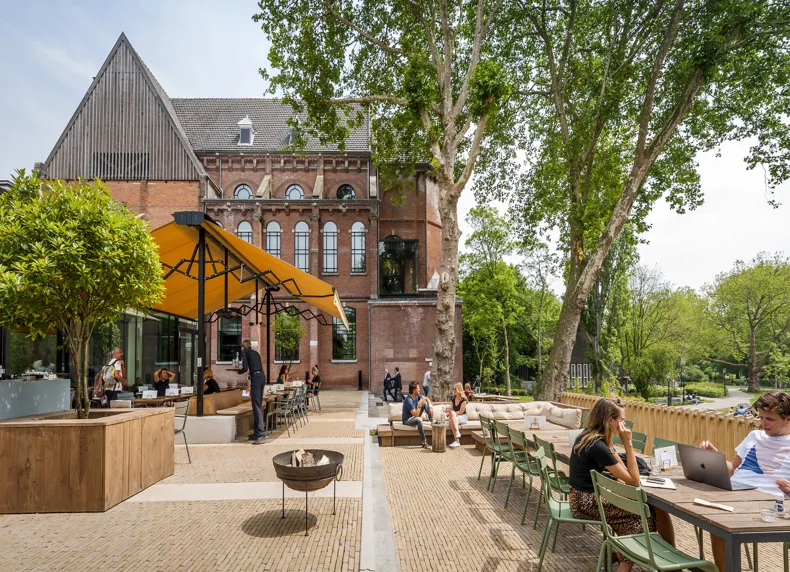
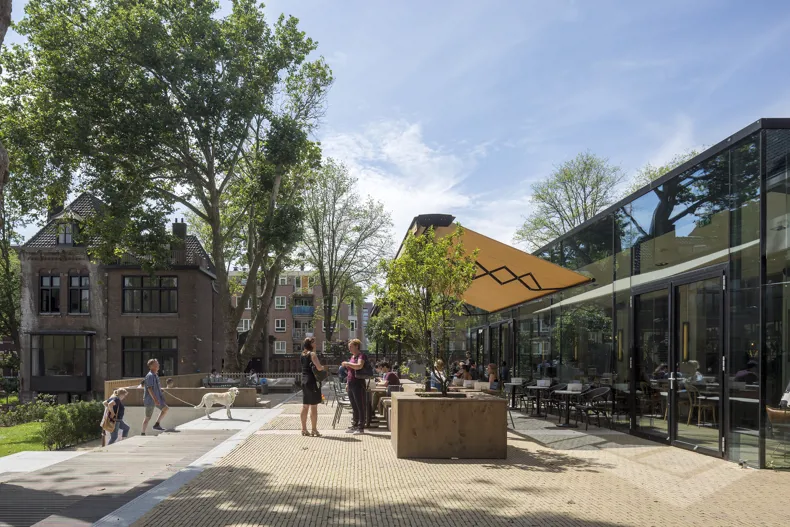
The listed building as we know it today is therefore based on the original design by architect Bleijs from 1888 which was never fully realised.
Team V Architectuur built on that design and enhanced the quality to create an extension that is contemporary but takes into account the historical significance of the monument at the same time: another prerequisite that Team V Architectuur had to meet.
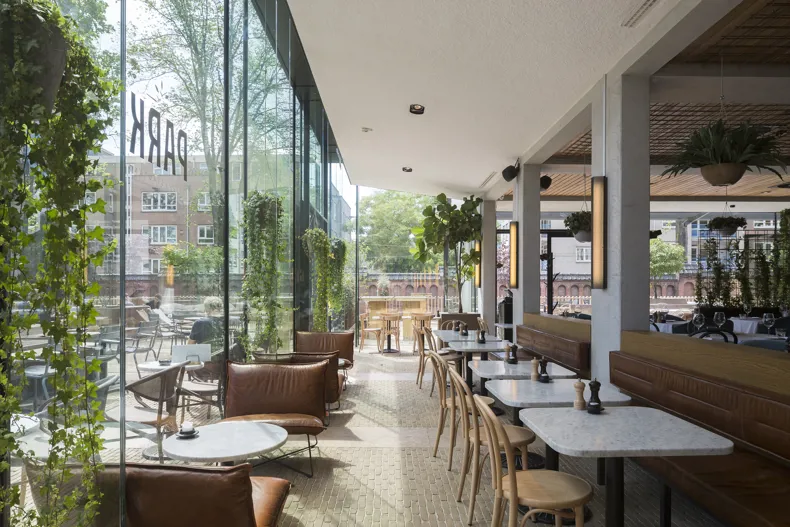
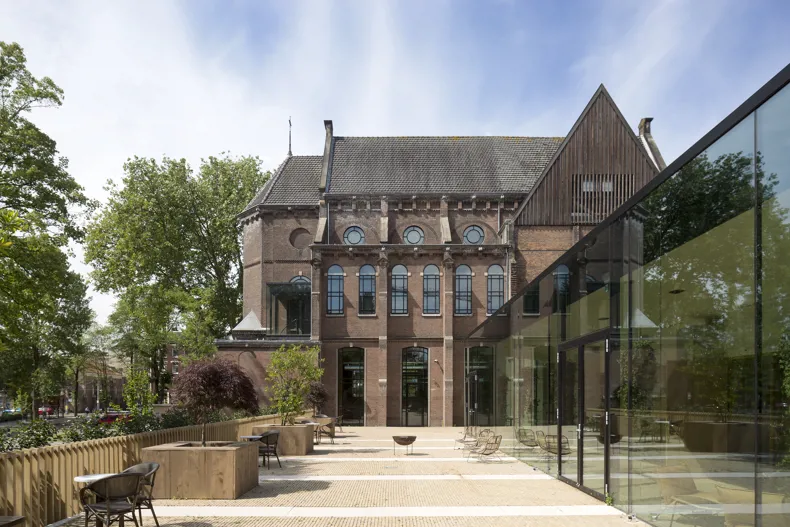
“The reason we chose the yellow colour was 'to bring the sun inside'. The yellowish colour gives both the conservatory and the terrace a warm, positive feel that makes people want to spend time there.
The colour fits in perfectly with the grey of the concrete columns and floor in the centre of the space.”
